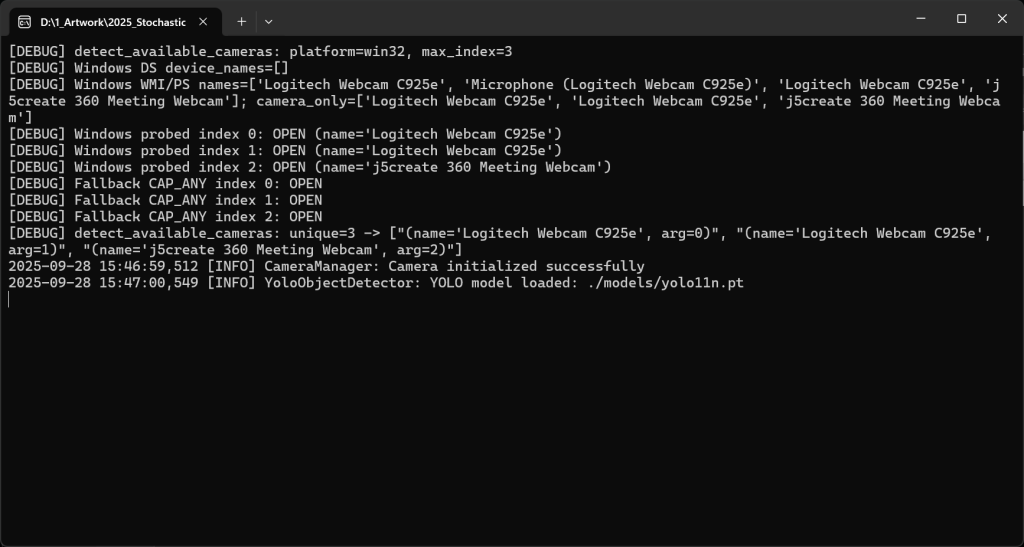The initial phase of this project involved tackling the technical groundwork required to process 360-degree video. I began by using OpenCV, a powerful open-source computer vision library, to stitch together the two separate video feeds from my 360-degree camera. OpenCV is an essential tool for real-time image and video processing, providing the necessary functions to merge the hemispheric views into a single, equirectangular frame. After successfully connecting the camera to my computer, I set up a basic Python workspace within my integrated development environment (IDE). The next step was to write a script that could access the camera’s video stream and display it in a new window, confirming that the foundational hardware and software were communicating correctly. This setup provides the visual canvas upon which the subsequent layers of AI-driven interpretation will be built.




